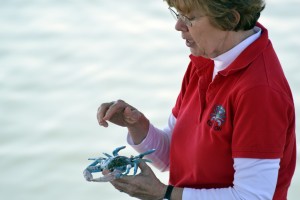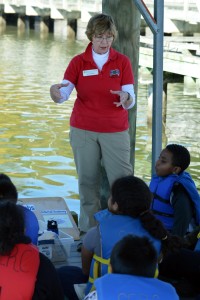by Jan Payne Wilson
Volunteers come in a great variety of ages, gender, talents and reasons for volunteering. Here’s my short story.
Growing up in Nature
I grew up in the Pacific Northwest and am of a generation that was lucky enough to be able to leave the house after school or on Saturday mornings to play outside for hours with the other neighborhood kids. We made hiding places in scotch broom thickets, climbed on fallen logs, wandered in the woods, had bracken fern spear fights and in the short, sweet summers spent time at a local beach on Puget Sound. It was idyllic, but at the time I took it all for granted.
I was a curious kid and for awhile thought I’d be a scientist. I created a tiny laboratory in a closet off the carport. In glass jars I had an odd collection of bugs, caterpillars and one unwilling garter snake. My youth microscope had pride of place, but with only a flashlight for light it was next to useless. Later in high school, challenges with math turned me towards the humanities instead of science.
Reviving Childhood Dreams
Now, fifty-some years later, I’ve chosen to return to the outdoors where I spend time in the spring and fall on a Rhode River dock at SERC teaching elementary and middle school kids about the great watershed of the Mid-Atlantic States and the Chesapeake Bay. We search through oyster baskets, do tests to measure water quality, use microscopes to examine plankton, put on waders to catch fish using a seining net and learn about the habits of that most famous inhabitant of the bay, the blue crab (Callinectes sapidus).
In a living lab on the SERC portion of the Rhode River, I’m learning at a very quick pace about all the wonderful habits of oysters and crabs. Did you know that every mature female blue crab with fertilized eggs has to maneuver her way to the mouth of the Bay? From SERC that’s just under 150 miles of walking and swimming with and against the Bay’s tides and currents, and they’re no Michael Phelps. It’s an amazing trek and it’s all done so that they can release their eggs into water with high salinity levels necessary for egg development and hatching. Because blue crab larvae can’t swim or move much on their own and simply drift with the currents, they’re considered plankton. That’s right, blue crabs are considered plankton. Within a month or two they go through several changes from one larval form to next, culminating into their transformation into tiny crabs or “juveniles” as scientists call them.
I often feel like my 12 year old self again, reading and collecting all sorts of new information and ideas. In that aspect, volunteering at SERC is highly rewarding. But that is not why I’m volunteering. I want to help bring the wonder of the natural world to children. It’s the one way I believe we can stir children to want to be caretakers of their part of the Earth. If we can impress young students with the remarkable lives and functions of animals that share the Bay with them, we have a chance – I hope a good chance that they’ll see its value and feel the urge to be the protectors that we, the older generation, haven’t been.
Moments of Wonder

Jan teaches students about the biology and ecology of blue crabs in the Chesapeake Bay
When we catch a blue crab and bring it up to the dock I say, “Look at the color of its top shell, its carapace.” It’s a lovely muddy green that provides a beautiful contrast to his blue claws. I then say, “Now turn around and look at the river.” Every time, every single time, the students say, “Whoa” “Wow” or some version of “Oh my gosh” when they discover the crab’s carapace is exactly the color of the river. That is a moment of wonder. That’s what I hope they’ll remember as they grow older and become teens, and then adults. I hope they become people who want to ensure the health of the Bay or whatever part of the natural world they settle into. That’s why I volunteer at SERC, to try to bring them those moments of wonder.
Jan is a volunteer in SERC’s Education Department. If you would like to volunteer in SERC’s Education Department, please visit our Volunteer webpage.


